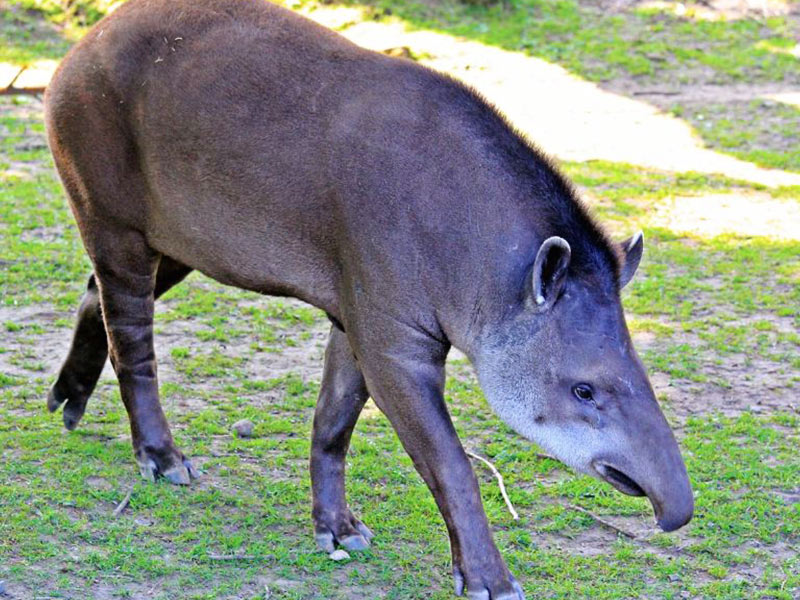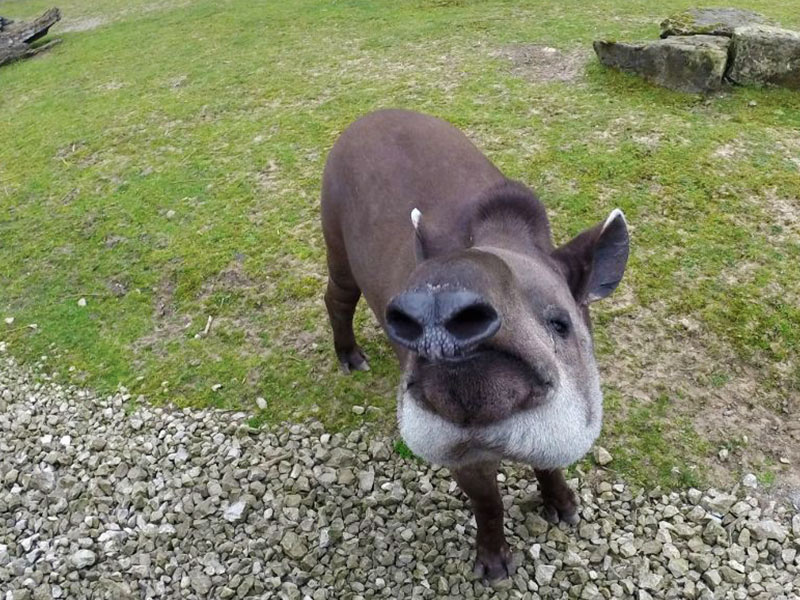Ends soon! Save 25% on Gold and Platinum memberships!


Brazilian Tapir










Despite their rather strange appearance and very long, twitchy nose, the tapir belongs to the same family as the horse, zebra and rhinoceros. The snout is long, but also very mobile, enabling the tapir to seek out the tastiest leaves, fruit and berries on trees and shrubs. In the Zoo, they are fed horse and pony pellets, fruit and vegetables.
Tapirs love to swim and their long snout is useful again as it helps them to breathe. They live in the forests of South America, but are often hunted for their meat and skins for leather which has significantly reduced their numbers in the wild. However, they can live until they are 30 years old.
Tapirs give birth to a single baby which is covered in a pattern of white spots and stripes. This provides great camouflage when they are hiding in the undergrowth if threatened by predators. As they eat vast amounts of plants, they spread seeds in their poo. This means that new plants grow in other parts of the forest providing food and shelter to different species.
Get the best price!